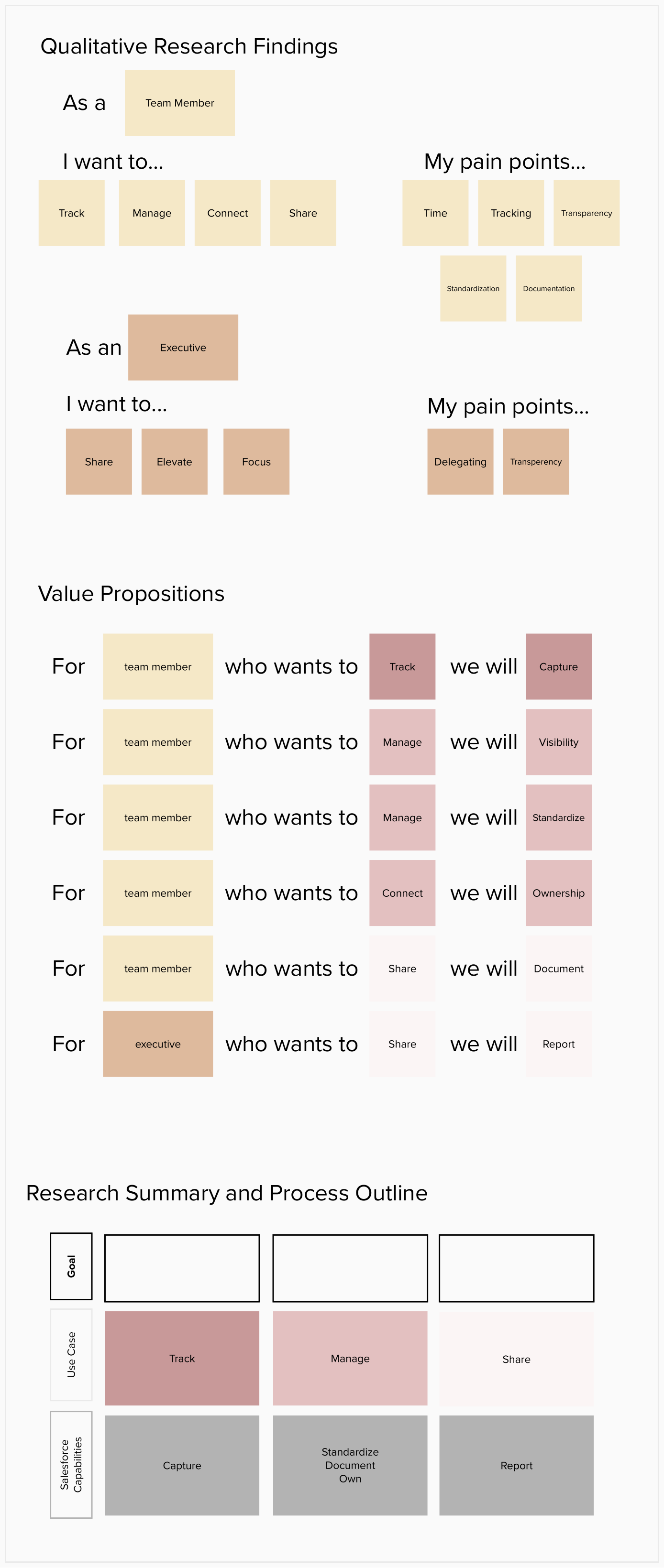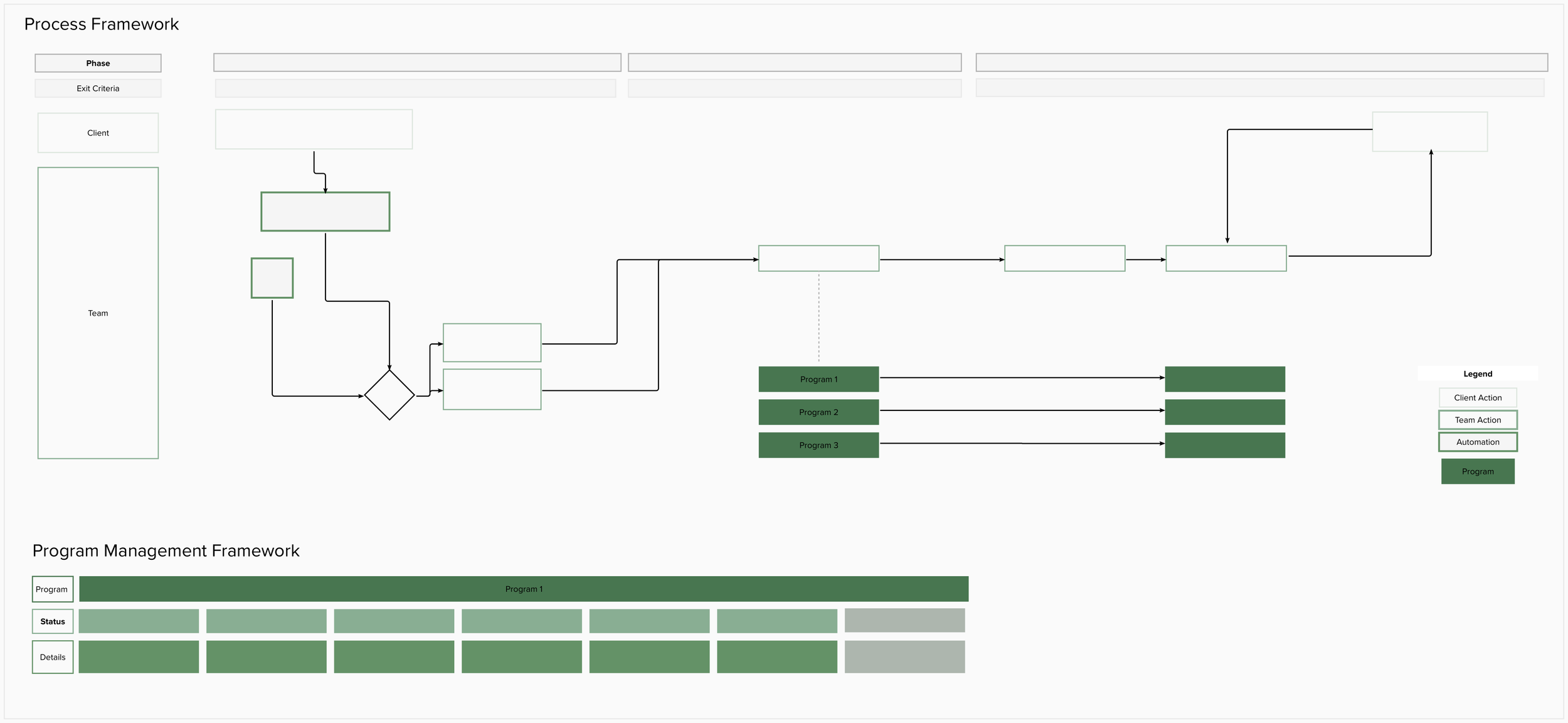The Client
A large, global online retailer and distributor
Results That Matter
This team needed a shared taxonomy to align their team and cross-organization objectives. We delivered a simple, fit-for-purpose Salesforce design that supported program management, information visibility and sharing across team members, and reporting in order to catalyze better team collaboration and reduce duplicate data entries and siloed documentation.
How We Did It
We conducted qualitative interviews with team members to surface their current workflow for documenting project and program progress in order to determine what was working well and what were opportunities for standardization and process improvement. We also took a deep dive into program documentation to explore types of information that was currently documented, what the steps were for processing and approving new requests, the review structure required, and the relevant documented sign-offs for each program. Leveraging our research, we developed a series of value propositions to surface assumptions, expectations, and business value for each user group. We also developed a program concept that captured key phases, handoffs, and use cases in order to determine appropriate Salesforce capabilities to leverage in order to support work taking place in each phase.
Beginning with one program and expanding to two, we developed a process map to model the process for ingestion, qualification, and program execution in order to surface the optimal strategy to document program data in a central Salesforce location. In addition to this, we mapped all current state data attributes stored across platforms into an organized hierarchy and taxonomy.
Process Framework
We then leveraged the process map to design automation for intake, approvals, and ongoing management of new applications. Across all three programs, we ensured taxonomy alignment and collaborative capabilities across team members. We iterated on these concepts and prototypes and incorporated team feedback to reflect current state requirements and aspirational future state experience. We tested our assumptions with team members to ensure that the attributes, data structure, and overall taxonomy aligned with program management needs and approach. Lastly, we developed a prioritized backlog for Salesforce development that delivered immediate business value and accounted for future needs.



